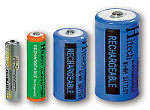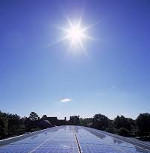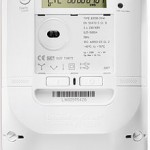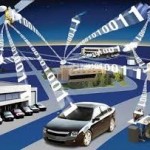Today, Internet-of-Things networks (and, more generally, Wireless Sensor Networks, which are wirelessly networked but not necessarily Internet-connected) are finding use in an increasing range of consumer, industrial and medical applications. Such networks often employ a large number of distributed nodes without interconnecting wires, which can’t practically be connected to the power grid, and therefore it is attractive to keep the need for battery recharging and replacement to an absolute minimum.
This can be achieved with the use of efficient, careful battery design choices as well as ambient energy harvesting technology to self-power small, efficient wireless network nodes from energy sources such as light, waste heat and vibration in the environment and highly energy-efficient design practices both at the hardware and software layers to keep the overall need for power to a minimum.
For some systems it is practical to use batteries alone – for example, lithium-ion, lithium-polymer or nickel-metal hydride batteries – and rely on user intervention to simply recharge and replace the batteries where needed. The batteries may be left internally, inside the device, with the system being plugged into a power supply via a charging port – perhaps using a low-power standard power-supplying interface such as USB – when the device requires a recharge, as opposed to the traditional method of removing and swapping the batteries.
In this sort of application, battery management and charging ICs such as the Microchip MCP73833 Li-polymer / Li-ion charge management controller can be of use to control the recharge of a Li-ion cell, as can buck/boost converters such as the Texas Instruments TPS63031.
A buck/boost converter like this allows a regulated output voltage to be generated from input voltages both higher and lower than the desired output voltage – an output of 500mA at 3.3V, in this case, from an input voltage anywhere from 2.4 to 5.5 volts. This allows a battery such as a two-cell NiMH, three-cell NiMH, or single-cell Li-ion / Li-polymer to be used efficiently and charged and discharged across the entire usable part of its discharge curve.
When it comes to choosing different battery chemistries for a particular application environment, non-rechargeable alkaline batteries are very cheap, widely available and are ideal for low-current applications at room temperature.
If a particular application system consumes very little power then it may be economically viable to choose disposable alkaline batteries that require user replacement once or twice a year.
Alkaline batteries do have two major disadvantages – poor low-temperature performance and relatively limited high-current performance. The available current from an alkaline battery is limited significantly in cold-weather environments, and at high discharge currents the total energy capacity available from the battery is limited.
Non-rechargeable lithium batteries tend to offer substantially increased performance at low temperatures as well as higher discharge current capability.
When it comes to rechargeable batteries, nickel metal hydride (NiMH) cells are the workhorse chemistry of modern rechargeable batteries, with a better lifetime across many charge and discharge cycles without the “memory effect” that affects nickel-cadmium cells.
A typical NiMH cell will have a cell voltage of 1.2 volts instead of the usual 1.5 volts expected from an alkaline battery – this may be significant in some designs but is generally acceptable. Despite this, NiMH batteries generally perform better than alkaline batteries at low temperatures and don’t decline quite as quickly as current draw increases, as well as providing the benefit of being rechargeable.
Lead-acid batteries can provide very high discharge currents for demanding applications such as mechatronics, with good energy density, but can perform poorly at low temperatures and can be subject to permanent damage through cell sulfation if they are kept discharged for any significant length of time.
Lithium-ion cells provide good energy density and many convenient cycles of repeated charge and discharge, but this battery chemistry requires precise control to avoid over-discharge or over-charge conditions which can permanently damage the battery. Despite their risk of fire and damage if mishandled, lithium-ion batteries provide very good discharge current capability, good energy density, and the ability to survive many repeated charge cycles, embedded inside devices which are charged and used without their battery ever being removed or replaced.
Power-efficient wireless sensor nodes can take advantage of some form of energy harvesting power supply, employing energy sources such as solar photovoltaics, vibrational energy harvesters or thermoelectric generators to minimise maintenance and extend battery life – possibly completely eliminating batteries entirely, if the power consumption of the system is small enough and a capacitor is employed for energy storage.
Energy harvesting management ICs that manage the accumulation of energy in a capacitor over a period of time to enable short bursts of relatively high power consumption, such as when a node wakes up and transmits a burst of data, are particularly well suited to low-power wireless sensor nodes.
In many applications, solar photovoltaics are the most familiar, relatively mature choice for low-power network nodes operating outdoors, for example in agricultural and meteorological instruments. However, other technologies suitable for extracting small amounts of power from the ambient environment exist.
For example, a wireless sensor node set up to monitor bearing wear in a generator could employ a piezoelectric crystal as a vibrational energy harvester, converting motor vibration into usable energy, or a thermoelectric generator mounted on a hot exhaust could harvest a small amount of otherwise wasted energy from the thermal gradient.
Solar photovoltaics are a common choice for sensing, control or measurement devices that are located outdoors where sunlight is available, and that consume a relatively small amount of power. For a small, low-power embedded device that receives a reasonable amount of sun each day, a moderately small solar panel is perfectly capable of supplying sufficient power, on average, to run a lightweight wireless network node consisting of a microcontroller, sensors and an embedded low-power radio such as an 802.15.4 system.
However, solar power is intrinsically intermittent and is only available for a fraction of the day, on average. To allow the system to have access to the current it needs to function when needed, solar-powered wireless devices almost always need to incorporate a small amount of energy storage in the form of a battery or supercapacitor in conjunction with the solar cell.
At this point you may start to wonder what the most appropriate power solutions are for your IoT or other products, and it’s no secret that the options are wide and varied. However the success of your product is predicated on its usability and thus autonomy from mains power.
For more guidance on this matter, from consulting to total product design from idea to delivering to the end user, the LX Group can be your partner in success. To get started, join us for an obligation-free and confidential discussion about your ideas and how we can help bring them to life – click here to contact us, or telephone 1800 810 124.
LX is an award-winning electronics design company based in Sydney, Australia. LX services include full turnkey design, electronics, hardware, software and firmware design. LX specialises in embedded systems and wireless technologies design.
Published by LX Pty Ltd for itself and the LX Group of companies, including LX Design House, LX Solutions and LX Consulting, LX Innovations.





